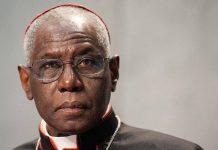The Church of the Holy Saviour in Chora has been handed over to the “religious authority of Turkey” to become a mosque for Muslim prayers

Ankara (August 22, 2020 Gaudium Press) — Another Byzantine church turned into a mosque. After the ‘reconversion’ of the emblematic Hagia Sophia into a mosque international news agencies reports that something similar has happened with the Church of the Holy Saviour in Chora, located in Istanbul, ancient capital of the Byzantine empire.
The decision is the result of one more executive order by the Recep Tayyip Erdogan, president of Turkey, and it has been published last Friday in the country’s Official Gazette. The old church has been handed over to the “religious authority of Turkey” to become a mosque for Muslim prayers.
History repeats itself
Like Hagia Sophia, the Church haas been a Christian church for centuries only transformed into a mosque under the Ottoman rule. For decades it has been used as a museum until Erdogan ordered its restoration as a mosque. The church is located near the old city walls and is famous for its mosaics and frescoes.
Although the Saint Jesus the Savior Church began its construction in the 4th century, it took its current form in the 11th and 12th centuries. Last year a court decision canceled the building’s status as a museum, as it recently happened with Hagia Sophia.
Apparently, the move comes following Erdogan’s underlying intention to gain the support of the Muslim majority of his country, and counteract the effects of the present economic recession damaging his popularity. This is interpreted as a clear indicator that Turkey could follow a path similar to that of Iran, transforming itself into an Islamic republic.
Greece’s Foreign Ministry has strongly rejected the conversion of The Church of the Holy Saviour in Chora into a mosque, saying that Turkish authorities “are once again brutally insulting the character” of another UN world heritage site. “This is a provocation against all believers. We urge Turkey to return to the 21st century and to mutual respect, dialogue and understanding between civilizations,” the ministry said in a statement.
Some history
In 324, Constantine, the Roman emperor who gave freedom to the Church, chose Constantinople as the new seat of his empire. Later it was called Byzantium and then Istanbul. After the fall of the Western Roman Empire, Constantinople was the capital of what was left of the empire, better known as Byzantium.
The Turks, a formerly nomadic people of central Asia, were configuring the Seljuk Empire which was already Muslim. In 1071, they defeated the Byzantine armies at the Battle of Manzikert and took over the eastern regions of the Anatolian peninsula.
Later, the Ottoman Empire was formed as a successor of the Seljuk, dominating the territories of former Byzantium. In 1453, the Ottoman Empire conquered Constantinople and the Eastern Roman Empire fell.
In World War I, the Ottomans participated in the war alongside the defeated Central Powers, the German Reich and the Austro-Hungarian Empire. Sultan Mehmet VI signed the Sèvres Treaty thus dividing the Ottoman Empire. As a result, the Turkish independence war took place seeking to revoke the terms of the Treaty.
Finally, in November 1922, the Sultanate was abolished, and the Republic of Turkey was created in a secular character. According to observers, Erdogan’s current drift and policies seem to announce the end of the secular configuration of the Turkish state.
With information from Actuall



































